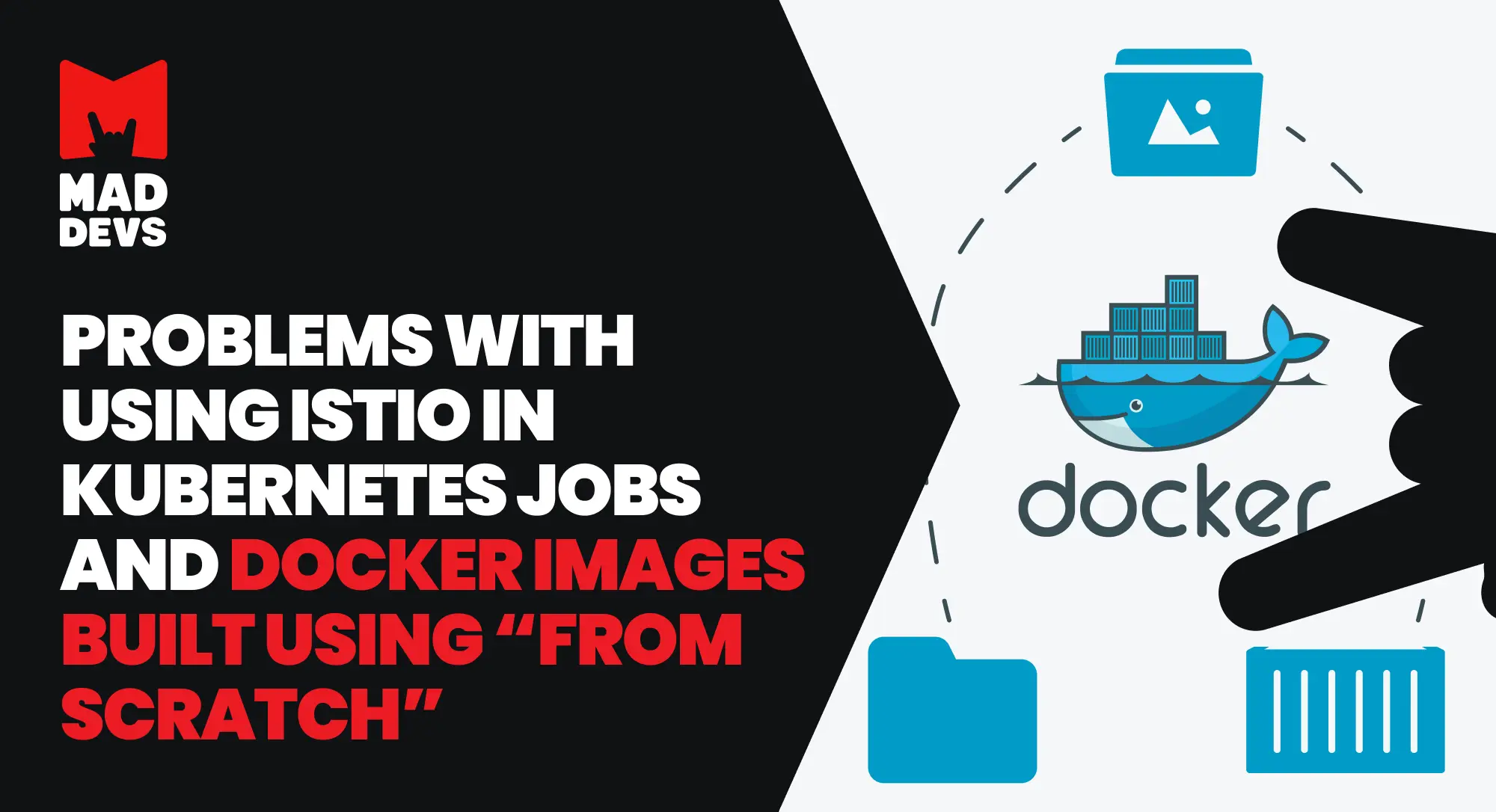If you have fallen for the hype that Java is going to retire, don’t jump to conclusions right away. Sure, some modern languages may be superior to Java in many ways, even in their primary uses. But Java is initially a great solution, rightly deserving of its colossal popularity and respect from professionals around the world. This is why Java development is actively ongoing, improving and extending its capabilities while third-party teams offer their own frameworks.
Today, we discuss two frameworks, Spring Boot and Quarkus, and more specifically, who needs them and why. Let's compare Spring Boot vs Quarkus in terms of feature set, performance metrics, average development cost, market popularity, and other important aspects. This article will help you decide whether Spring Boot or Quarkus is better for your applications and is worth learning.
Spring Boot: the data-driven application framework
Let's pay tribute to the oldies. Spring Boot is an open-source Java-based framework supporting Java, Kotlin, and Groovy, and JIT compilation, making it much easier to create, configure, and run microservices and enterprise web applications. Its first version was released back in 2002 with the Apache 2.0 license. Since then, it has managed to develop a huge number of extensions, which simplify, improve, or extend standard solutions for designing, writing, and maintaining enterprise-level applications.
Spring Boot features
As part of the Spring Framework, Spring Boot is easier to deploy and configure, has less code, and can be sent to production faster. This is possible due to the automatic configuration of the application built on Java Annotations. Here are some of the features of the Spring Framework available in the Spring Boot application:
Inversion of control container: Offers a solution for configuring and controlling Java objects by linking them together. A key advantage is that container-managed objects, known as beans, avoid XML files. However, it's possible to add them manually.
Aspect-oriented programming framework: Allows users to program in an aspect-oriented paradigm and perform actions that are performance-costly or impossible in an object-oriented paradigm.
Model-view-controller framework: Using the Serverlet API allows users to develop in an MVC pattern, which simplifies the creation of micro-services applications.
Batch framework: Offers a large set of out-of-the-box features for managing batches more efficiently, distributing the development of large amounts of data into smaller volumes that can also be chained together. These features are logging/tracing, transaction management, job processing statistics, and job restart.
Remote access framework: RPC introduces a level of abstraction for an easier and more efficient way of handling objects on servers.
Authentication and authorization framework: Provides many protocols and standards and uses the Spring Security subproject for authorization and authentication options.
Integration framework: Offers a set of out-of-the-box reusable functions for messaging, architecture compatibility, and event management with routers, transformers, and adapters like AMQP, JMS, XMPP, SMTP, IMAP, FTP/FTPS/SFTP, filters, service activators, etc.
Testing framework: Offers functions and modules for unit and integration tests.
As visible in the list above, the Spring Boot team has been busy during the previous 20 years, which is why the framework is used in many universal solutions.
Quarkus: the Kubernetes-native framework
Quarkus is an open-source Java framework that supports Java, Kotlin, and Scala and provides AOT compilation. It was created to simplify the development and deployment of Java applications in containers like Docker and Kubernetes, as well as to create microservice Java applications with minimal consumption of resources.
Quarkus is very young, since it was founded in 2019. But it is actively developing with the same Apache 2.0 license and is very much to the liking of many because it lives up to its purposes very well. It is easy to use and significantly less demanding on the hardware resources to run applications.
Quarkus features
The framework's initial focus on working with containers, especially Kubernetes, is valued by many developers and companies. Instead of developing as a separate framework like Spring Boot, Quarkus aims to maximize integrations and effectively support other already reputable frameworks and services.
Imperative and reactive programming: Now available for full use.
Support of OpenJDK HotSpot and GraalVM: Allows users to compile code natively for containers and not run JVM inside them, which reduces the number of resources consumed. This includes Linux and Kubernetes containers.
Live coding: Offers automatic code deployment within a container to eliminate traditional processes. Instead of Write Code/Compile/Deploy/Refresh Browser/Repeat, the process becomes Write Code/Refresh Browser/Repeat.
Zero configuration with dev services: Quarkus provides dev services that automatically start and configure the database when users develop or test applications.
The DEV UI: A command line-driven interactive developer interface where developers can get dependency updates, update configurations, and synchronize them.
Continuous testing: Implemented on the command line and uses the DEV tool to eliminate many third-party tools and side processes for it.
Based on the best standards: These include JAX-RS, Java Persistence API (JPA), Java Transaction API (JTA), Apache Camel and Hibernate, and several others.
It's important to understand that although Quarkus is still relatively new, it's already making great progress and, most importantly, meeting expectations.
Comparing Quarkus and Spring Boot
From the start, comparing these frameworks may not be entirely relevant, but it is necessary. On the one hand, they are in completely different weight categories. You could say Spring has earned the title of an alternative Java standard, redefining all standards up to JavaBeans. It has its own solution for all cases, which are incredibly good and work great together. Quarkus, on the other hand, is just getting started. But using reactive programming, AOT compilation, and the container-first approach has already shown amazing results, which is why it sparked discussions around itself as the heir to the throne.
One should not replace the other, at least not in the short term. Those are different approaches to solving issues; each has earned its place. Obviously, if you see something critical to your business in the list of main technical features offered, you already roughly know your choice.
But take your time. In addition to the theory, you need to look at the practical aspects of each solution, which are best expressed in numbers.
Spring Boot vs. Quarkus performance
Generally speaking, we can immediately declare a winner when talking about performance and memory consumption. Still, everything is not quite clear, depending on whether we are comparing Spring Boot and Quarkus using the JVM or Native.
| METRICS | SPRING BOOT JVM | QUAKUS JVM | SPRING BOOT NATIVE | QUARKUS NATIVE |
|---|---|---|---|---|
| Startup time (sec) | 1.865 | 1.274 | 0.129 | 0.110 |
| Build artifact time (sec) | 1.759 | 5.243 | 113 | 91 |
| Artifact size (MB) | 30.0 | 31.8 | 94.7 | 80.5 |
| Loaded classes | 8861 | 8496 | 21615 | 16040 |
| CPU usage max (%) | 100 | 100 | 100 | 100 |
| CPU usage average (%) | 82 | 73 | 94 | 92 |
| Heap size startup (MB) | 1048.57 | 1056.96 | - | - |
| Used heap startup (MB) | 83 | 62 | 12 | 58 |
| Used heap max (MB) | 780 | 782 | 217 | 529 |
| Used heap average (MB) | 675 | 534 | 115 | 379 |
| RSS memory startup (MB) | 494.04 | 216.1 | 90.91 | 71.92 |
| Max threads | 77 | 47 | 73 | 42 |
| Requests per second | 7887.29 | 9373.38 | 5865.02 | 4932.04 |
According to the test data, Quarkus is often better than Spring Boot, not only in the case of Native, where it should be better because it was initially designed for this approach, but even when using JVM, except for a couple of points.
- Startup time, as promised by Quarkus, is faster than Spring Boot in all cases.
- Build artefact time in the case of using the JVM is significantly longer than that of Spring Boot. All in all, this is not surprising since, as was said before, good JVM handling and JIT compilation as the primary approach is more of Spring Boot's strong point.
- Artifact size in the case of using JVM is again better than Spring Boot, though not by such a large margin.
- Loaded classes are better than Quarkus, even with the JVM, but with Native by a good margin.
- CPU usage average is again better than Quarkus, both with JVM and Native.
- Heap size startup, in the case of JVM, Spring Boot performed better than Quarkus again.
- Used heap tartup showed us that Spring Boot has something to surprise us in the case of Native as well, because it took significantly less memory than Quarkus. And Quarkus, on the other hand, was better with the JVM.
- Used heap max also showed a little bit better than Spring Boot, especially in the case of Native.
- Used heap average performed better with Quarkus in the JVM, and Spring Boot performed better with Native.
- In the RSS memory startup, we see the expected victory of Quarkus in both JVM and Native cases.
- Max threads, we notice less resource usage by Quarkus, both JVM and Native.
- Request per second is lower in Spring Boot in the JVM, but in Native, it is lower in Quarkus.
As we said, everything is not as clear-cut as we would like, but we can catch the trend. Quarkus consumes fewer resources for running an application in almost every case when we talk about Native, and sometimes in JVM. Spring Boot may perform better after application startup, especially with the JVM. It is also worth noting that support for native code was originally built into the Quarkus architecture, while Spring is in an experimental version. This fully explains the separation of Quarkus when working as a native application.
Spring Boot vs. Quarkus popularity
Of course, Spring Boot remains much more popular than Quarkus. We can say that most developers and companies mean Spring Boot when they develop enterprise Java applications. And likely, this will continue for a long time in the enterprise environment, where you need stable, tested, and complex solutions, like Spring Boot.
However, Quarkus is rapidly gaining popularity, especially in cases with Kubernetes, providing much lower resource consumption. All this is also important for businesses because resource consumption has to be paid for. Naturally,owners want to reduce it, which Quarkus does very well. Also, many developers and companies are starting to see it as the future because it makes development much easier and stays based on industry standards, unlike Spring Boot, which has redesigned all the standards.
We can conclude here that Spring Boot holds well-deserved popularity as a complete, universal solution for any task right out of the box and to use this in very large and busy enterprise environments. Quarkus is actively gaining it in business solutions, where a standalone solution, resource reduction, and excellent container handling are important. Quarkus performs well because it was originally designed as a native solution and special attention to Doker and Kubernetes.
Spring Boot vs. Quarkus development cost
The cost of development depends on several factors, such as developer compensation, development efficiency, project requirements, and infrastructure expenses. To start with the first, Spring Boot developers typically earn around $100,000 annually in the US with a larger talent pool available, while Quarkus specialists have similar salaries with a more limited talent market. Spring Boot excels in development speed for large enterprise applications due to its mature ecosystem, extensive documentation, and robust community support, whereas Quarkus offers enhanced productivity features like live coding and Dev UI that are particularly beneficial for cloud-native and Kubernetes-based projects.
While Spring Boot is generally more cost-effective for complex enterprise applications due to its established tooling, Quarkus can provide significant operational cost savings through reduced resource consumption. It runs efficiently with as little as 50MB compared to Spring Boot's hundreds of megabytes. Therefore, Quarkus is more economical for cloud deployments despite its smaller community and potentially slower troubleshooting for unique issues.
Quarkus vs Spring Boot integration and ecosystem
The integration capabilities and surrounding ecosystem of a framework directly impact developer productivity and application functionality. Both Spring Boot and Quarkus offer extensive integration options, but the approaches and maturity levels are different. Understanding these differences helps teams evaluate which framework better aligns with their existing technology stack and future integration needs.
Spring Boot benefits from the extensive Spring ecosystem with ready-made integrations for nearly every enterprise technology. Spring Cloud offers comprehensive solutions for distributed systems, including service discovery, configuration management, and circuit breakers. The mature Spring ecosystem includes tooling support in IDEs and community resources. Furthermore, most Java libraries provide explicit Spring integration modules or examples.
The Quarkus extension ecosystem includes over 100 curated extensions that integrate seamlessly with the framework's build-time optimization approach. Quarkus emphasizes compatibility with MicroProfile and Jakarta EE specifications to provide standardized approaches to enterprise concerns. The framework's reactive focus enables superior integration with event-driven technologies like Kafka, AMQP, and other messaging systems. Quarkus directly supports GraalVM native compilation to ensure the full ecosystem maintains compatibility with native image generation.
Quarkus vs Spring Boot security and compliance
Security capabilities and compliance support represent critical considerations for enterprise applications, particularly in regulated industries. Framework-provided security features can significantly reduce implementation efforts while ensuring adherence to security best practices. The approaches to security differ between the frameworks in important ways that affect implementation complexity and security posture.
Spring Boot leverages the mature Spring Security module to provide comprehensive authentication, authorization, and protection against common vulnerabilities. Spring Security integrates with enterprise identity providers through standards like SAML, OAuth2, and LDAP with minimal configuration requirements. The framework's large user base has led to well-documented security patterns, extensive penetration testing, and regular security updates. Compliance includes standards like GDPR, HIPAA, and PCI-DSS.
Quarkus implements security through its SmallRye Security extension to provide MicroProfile JWT and OpenID Connect integration. Security in Quarkus benefits from build-time analysis that can detect certain security configuration issues before deployment. The framework's reactive security model supports non-blocking authentication and authorization flows that maintain performance advantages. Quarkus leverages technologies like mutual TLS and just-in-time authentication that align well with zero-trust security models.
Spring Boot vs. Quarkus: use cases
Different application requirements and deployment environments create natural fits for each framework's strengths and limitations. Making an informed framework choice requires understanding how each aligns with specific use case characteristics and constraints.
Spring Boot use cases
Spring Boot excels in several scenarios that leverage its long existence and comprehensive ecosystem:
- Enterprise applications: Organizations with complex business logic benefit from Spring Boot's robust dependency injection, extensive documentation, and battle-tested reliability.
- Rapid prototyping: The Spring Initializer and starter dependencies enable quick application scaffolding, which makes Spring Boot ideal for proof-of-concept projects and MVPs.
- Legacy system integration: Spring Boot's compatibility with traditional enterprise technologies makes it the preferred choice when integrating with established systems or migrating monolithic applications.
- Data-intensive applications: Applications requiring sophisticated data access benefit from Spring Data's repository abstractions, transaction management, and support for multiple data stores, from traditional relational databases to NoSQL solutions.
- Batch processing: Spring Batch provides robust capabilities for high-volume data processing with features like job scheduling, restartability, and comprehensive monitoring, making Spring Boot ideal for ETL operations and reporting systems.
Quarkus use cases
Quarkus addresses different priorities with its cloud-native approach:
- Serverless applications: The minimal footprint and fast startup times of Quarkus applications make them ideal for serverless environments.
- Edge computing: Applications deployed on resource-constrained devices benefit from Quarkus' minimal memory footprint and optimized runtime.
- Kubernetes deployments: Quarkus' native compatibility with container orchestration platforms results in more efficient resource utilization, faster scaling, and improved density of services per node.
- Real-time data processing: Applications requiring near-instantaneous response times benefit from Quarkus' reduced latency and optimized execution path.
- Cloud cost optimization: Organizations aiming to reduce cloud infrastructure expenses find value in Quarkus' resource efficiency.
The decision between these frameworks ultimately depends on a business’s priorities regarding developer experience, performance requirements, and deployment environment constraints.
| FEATURE | SPRING BOOT | QUAKUS |
|---|---|---|
| Performance | Slower startup times due to extensive abstraction layers; higher memory consumption; longer response times | Up to 85% faster startup; minimal memory usage; faster time-to-first-response |
| Development cost | $100K avg. developer salary; larger talent pool; cost-effective for complex enterprise applications; mature tooling | $100K avg. developer salary with limited talent market; operational cost savings through reduced resource consumption; more economical for cloud deployments |
| Integration | Extensive Spring ecosystem; hundreds of starters via Spring Initializr; comprehensive Spring Cloud solutions for distributed systems | 100+ cloud-native extensions; compatibility with MicroProfile and Jakarta EE; superior integration with event-driven technologies |
| Ecosystem | Mature ecosystem with extensive IDE tooling; robust community resources; widespread adoption; most Java libraries provide Spring integration | Rapidly developing ecosystem focused on cloud-native extensions; reactive programming models; all extensions maintain compatibility with native image generation |
| Security & compliance | Comprehensive Spring Security module; integration with enterprise identity providers; well-documented security patterns; supports GDPR, HIPAA, PCI-DSS compliance | SmallRye Security extension; MicroProfile JWT and OpenID Connect; build-time security analysis; reactive security model; zero-trust security model alignment |
| Best for | Enterprise applications; rapid prototyping; legacy system integration; data-intensive applications; batch processing | Serverless applications; edge computing; Kubernetes deployments; real-time data processing; cloud cost optimization |
Spring Boot vs. Quarkus pros and cons
In addition to the differences mentioned above, it's worth considering the advantages and disadvantages of each to understand which framework to choose. These include mention of performance and other important aspects.
| FRAMEWORK | PROS | CONS |
|---|---|---|
| Spring Boot | ➕ Automation for configuration of dependencies, objects, and containers ➕ Strong performance with JVM and JIT compilation ➕ Robust aspect-oriented programming capabilities ➕ Time-tested framework with enterprise industry respect ➕ Massive community support with ready solutions | ➖ Less control and fewer integration options ➖ High resource demands for running and building ➖ Complex internal dependencies of modules ➖ Long startup times ➖ Steep learning curve for newcomers ➖ Higher cloud infrastructure costs due to memory footprint ➖ Not optimized for native compilation |
| Quarkus | ➕ Streamlined container and Kubernetes integration ➕ Reduced resource usage with GraalVM native builds ➕ Support for both imperative and reactive programming ➕ Fast startup and runtime ➕ Small memory footprint for native images ➕ Comprehensive, up-to-date documentation ➕ Strong focus on quality third-party integrations ➕ Superior performance in cloud-native environments | ➖ Complex initial Graal VM installation and setup ➖ Small pool of specialized developers ➖ Less mature ecosystem and fewer community resources ➖ Limited support for legacy system integration ➖ Steep learning curve for Java developers ➖ Few production-proven enterprise implementations ➖ Troubleshooting can be more challenging for unique issues. |
Each solution has advantages and disadvantages depending on the needs of a particular business. The market will also determine which framework will be easier and cost-effective, given the expertise available to businesses.
Spring Boot and Quarkus alternatives
If you are not satisfied with Spring Boot or Quarkus, you may consider other alternatives such as:
- Micronaut
- Knative
- Dropwizard
💡 If you are unsure what to choose, you can tell us about your project during a free consultation. Our Delivery Managers will carefully consider your case and offer the most suitable and profitable solution for the launch and growth of your business.
Micronaut
Micronaut is a Java-based framework that supports languages like Java, Kotlin, Groovy, and AOT compilation. Its main goal is to provide better performance and less resource consumption.
Micronaut is still young, founded in 2018 and published under the Apache 2.0 license, making its community active but not yet very large.

Knative
Knative is an open-source PaaS for enterprise-level serverless application development and automated deployment and scaling in Kubernetes.

Dropwizard
Dropwizard is a Java-based framework for fast bootstrapping of Java REST services. It provides several other frameworks and support for Java libraries that will help make creating, running, and deploying your application much easier.

One of the well-known sponsors is JetBrains, which makes excellent IDEs for a variety of developers and also fully supports this framework on its platform.
Summary
In conclusion, both frameworks are awesome. No matter what you choose, you will be able to achieve your goals with the best quality. The only difference is how comprehensive or specialized your solution is and whether you prioritize the application's speed or development itself. And, of course, what key technical solutions are crucial to your project.












